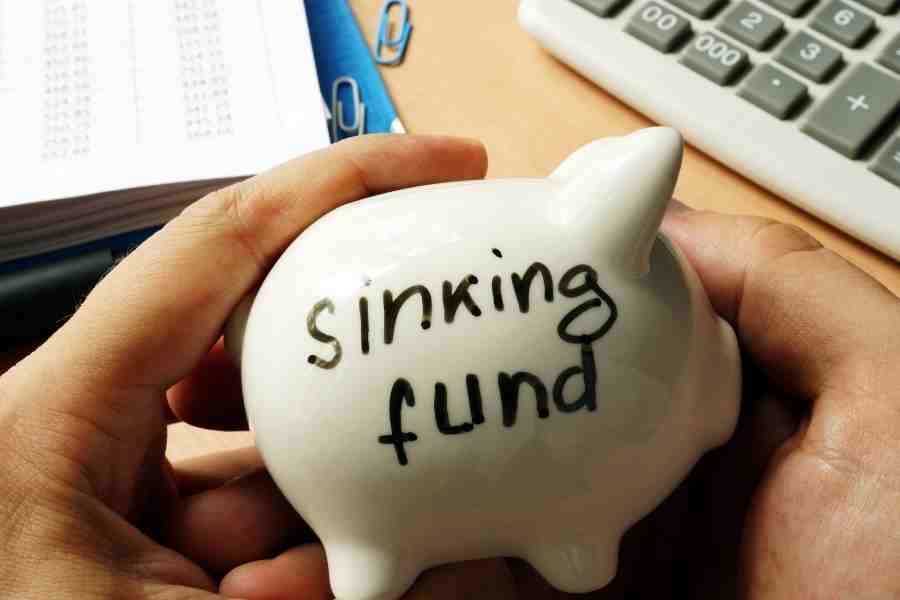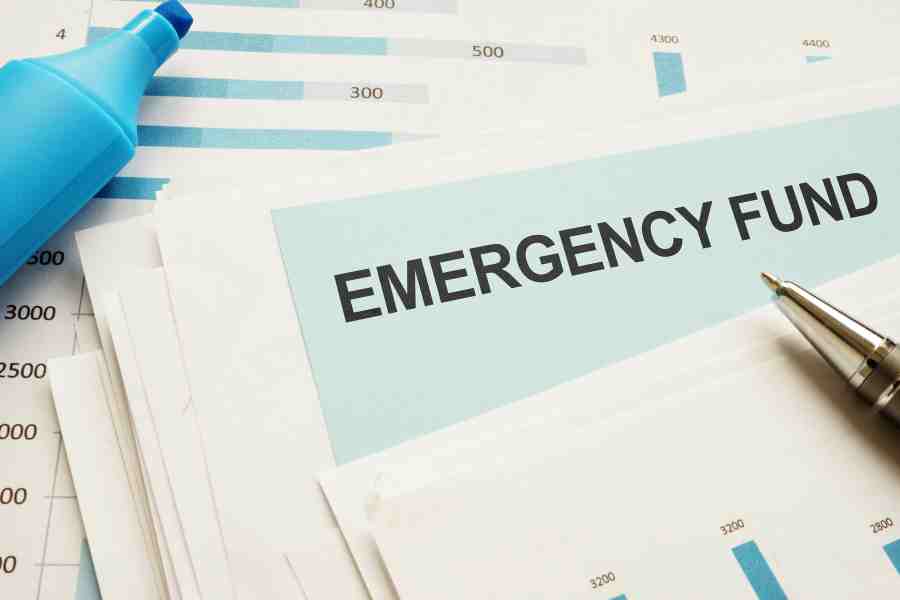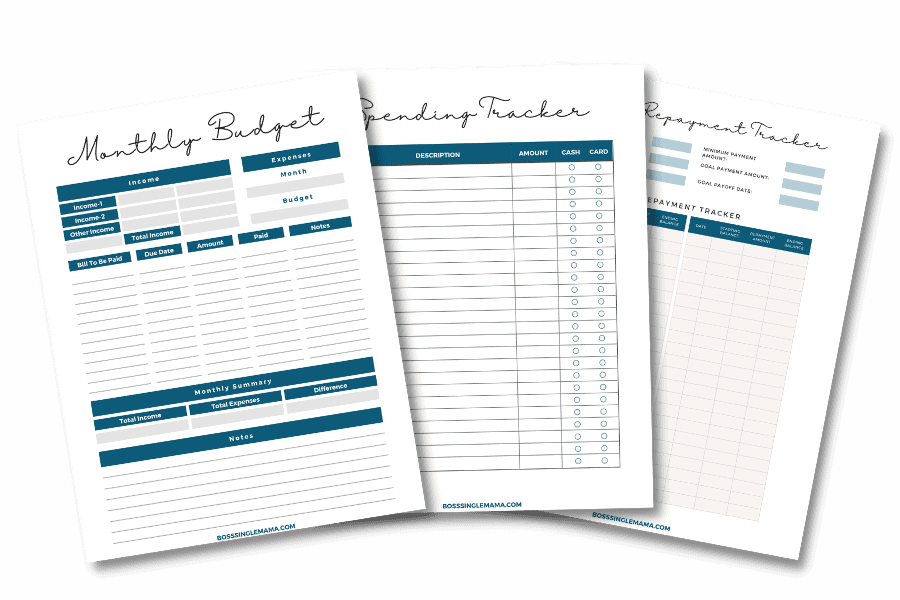Saving money can help you get ahead financially and prepare for the unexpected. How you save–and where you keep the money–can depend on your financial goals.
Your savings strategy might include sinking funds and an emergency fund. The difference between a sinking fund vs. emergency fund lies in what they’re designed to do.
Sinking funds are money that you save for a specific purpose, while emergency funds hold cash that you can use to pay for unexpected expenses. It helps to understand how they compare and what role each one plays when managing your personal finances.

LIKE FREE MONEY?
Here are some of my go-to apps for earning extra cash!
Survey Junkie. Earn up to $50 per survey just for sharing your opinions.
Swagbucks. Make money by playing games and watching videos. Join for free and get a $10 bonus when you sign up!
InboxDollars. Take surveys and get paid, no special skills or experience required!
Rakuten. Earn up to 40% cash back at hundreds of retailers, online or in stores. And get $30 for each person you refer, along with a $10 sign up bonus!
CashApp. Need a simple app for sending and receiving money? Get $5 free when you use code ‘VZXRXZN’ to join CashApp.
Table of Contents
Sinking Fund Definition

What does the term sinking fund mean?
A sinking fund holds money that you set aside for future expenses. You can use sinking funds to pay for recurring expenses, irregular costs or large purchases.
You can set up one large sinking fund to hold all of the money you’ll need for future expenses. Or you may establish different sinking funds and assign each one a specific goal.
Sinking funds are helpful for saving toward costs that aren’t part of your regular monthly expenses. The idea of a sinking fund is to ensure that you’re prepared for irregular expenses or one-off purchases when it’s time to pay for them.
Sinking Funds Examples
How you use a sinking fund account can depend on your goals. Again, sinking funds are meant for expenses that you may not pay on a regular basis, but know you need to pay.

What are some examples of sinking funds? The types of funds you may set up can include savings for:
- Home repairs or home renovation projects
- Medical expenses
- New car down payment
- Car repairs or a new set of tires
- Holiday gifts and birthday gifts
- Annual pet visits
- New furniture
- Vacation expenses
- Insurance premiums that are paid biannually or annually
Your sinking funds goals may look different, depending on what minor or big expenses you’re saving for. How much money you keep in each fund can also depend on its specific purpose.
For example, I have a sinking fund set up for Christmas gifts and other special occasions. My goal is to save $2,000 in this account so that when the holidays roll around or it’s someone’s birthday or I need to buy a Mother’s Day gift, I’ll have the cash to pay for it.

Save More With Rocket Money
Stop overpaying and start saving!
Rocket Money is an all-in-one personal finance app that helps you find savings instantly, lower your bills, and keep more of your hard-earned cash.
It’s a simple way to build savings back into your budget every month, without getting nickel and dimed.
How to Set Up Sinking Funds
Sinking funds can be a financial stress reliever since they help you to save money for different purposes strategically. Setting up one or more sinking funds is a fairly straightforward process.
1. Choose a savings goal
The first step in setting up a new sinking fund is choosing a goal. Again, a sinking fund is usually ideal for a non-monthly expense that’s planned.
So, for example, say you buy new tires for your car every three years. That’s a great example of an expense that you could use a sinking fund to cover.
2. Decide how much money to save

Once you have a purpose for a sinking fund, you can figure out how much money to save in it. You might need to save a small amount of money or a lot of money, depending on your goal.
Using new tires for your car as an example again you’d set the amount of money needed to purchase them as your goal. You can then work on saving a little bit of money at a time toward your goal until it’s time to go tire shopping.
Adding the amount you’re saving toward each sinking fund goal as a line item in your monthly budget is a simple way to do that. You can also use a sinking funds tracker to monitor your progress.
3. Set a time frame for saving
Sinking funds work by having you save money towards a set goal over time. Your time frame for saving will determine how much money you need to add to your sinking funds each month.
For example, say that you need to save $1,000 for your tire purchase. You plan to buy them in December and it’s now June, leaving you with six months to save toward your goal.
To reach your goal, you’d need to save $500 per month in your sinking fund.
The bigger the expense and the shorter the time frame, the more you’ll need to save each month. Smaller goals or goals with a longer time frame, on the other hand, may only require you to save a little bit of money per month.
4. Automate your sinking fund goals
You’ve chosen a savings goal, decided how much to save and calculated the number of months that you’ll need to set money aside to reach it. Now it’s time to actually start funding your savings goals.
You can set aside money manually by transferring money from your checking account to a separate account for sinking funds each payday. But automating savings deposits can make things a little easier.
Automatic deposits guarantee that the extra money you need to save gets where it needs to go. It’s the easiest way to save for any minor or major expense that’s included in your sinking fund categories.
Where to Keep Sinking Funds

Sinking funds are for money that’s designed to be spent. So it’s a good idea to keep those savings in a place that’s accessible but doesn’t put you at risk of spending accidentally.
High-yield savings accounts
A high-yield savings account is a great way to separate sinking funds from the money that you use to pay monthly bills. Compared to a traditional savings account, high-yield accounts can earn higher interest rates and charge fewer fees.
If you have a bank account at a brick-and-mortar financial institution, you can link it to a high-yield account at an online bank. You can then set up an automatic transfer to deposit funds.
Some online banks allow you to create “buckets” inside your savings account, so you can separate funds out for different sinking fund goals. That can be a strategic way to save for different goals, without having to open multiple accounts.
Money market account
A money market account is another option for sinking funds and it’s actually one that can make a lot of sense.
Money market accounts combine features of savings accounts with checking accounts. You can earn interest on balances and your bank might give you access to a debit card or paper checks.
That makes it convenient to pay for annual expenses or a large expense, without having to transfer money from a separate savings account to your checking account.

Grow Savings Faster With Current
Current is a digital banking app that makes it easy to grow savings, manage spending and track your goals in one place! You can set up individual savings pods for different goals and earn the same competitive APY for each one.
Aside from making saving a breeze, Current also comes with other great features like fee-free overdraft and access to 40,000+ ATMs!
**View product disclosures
Certificate of deposit (CD) account
If you have an exact deadline for withdrawing money from a sinking fund to cover an expense, then you might use a CD to save.
CD accounts are time deposits, meaning you agree to leave money in the account for a set time period. During that term, your deposit earns interest.
Once the CD’s maturity date rolls around, you can withdraw your initial deposit and the interest earned or roll it into a new CD.
Emergency Fund Definition

An emergency fund is your “just in case” money that you save to cover unexpected or unplanned expenses. It’s a financial safety net that you can use to pay for minor significant expenses that aren’t part of your monthly expenses or sinking funds.
Financial experts often refer to an emergency fund as a rainy day fund, based on the idea that in everyone’s life, a little rain must fall.
Having an emergency fund can give you a sense of financial security when life throws you a curveball. They can also help you avoid racking up credit card debt to cover unexpected expenses.
Emergency Fund Examples

An emergency fund is meant to be used for true emergencies only. Spotting a pair of shoes on sale that you’ve been dying to buy isn’t an emergency.
Here are some examples of when an emergency fund can come in handy.
- You’re in a car accident and need to cover your $1,000 deductible in order to file an insurance claim.
- An unexpected job loss causes a drastic reduction in your income, but you still have to make monthly payments to your mortgage and other bills.
- A medical emergency puts you out of work for a month and leaves you with a pile of doctor bills to pay.
- Your dog swallows its favorite chew toy and needs life-saving surgery to the tune of $3,000.
- A natural disaster makes your home unlivable and you need to pay for temporary housing while you’re waiting on your insurance company to pay out a claim.
Ideally, you never experience any of those situations. But if you do, having an emergency fund to cover expenses can give you peace of mind.
How to Build an Emergency Fund

Saving for emergencies can be an ongoing process, similar to saving for sinking funds. Here are a few simple steps to get you started with building an emergency stash of cash.
1. Decide how much to save
Personal finance experts usually recommend setting aside three to six months of expenses for emergencies. So, if a single month’s budget for you is $4,000 then your emergency fund goal would be anywhere from $12,000 to $24,000.
This is just a rule of thumb, however. You may need to start with a smaller goal to begin with, then work your way up.
Dave Ramsey, for example, recommends starting with a $1,000 baby emergency fund. That’s usually enough money to handle any minor emergency that might come your way.
You can aim to save $1,000 in 30 days, then continue adding to your emergency fund until you reach a level that you’re comfortable with.
2. Choose where to keep your emergency fund
Emergency funds are usually best kept in a separate savings account. Keeping your emergency cash in your checking account can make it all too easy to spend it.
Your options for where to keep an emergency fund are similar for a sinking fund. You can put your money into a high-yield savings account or a money market account.
Why not save your emergency fund in a CD?
There’s one very good reason. Banks can charge penalties for withdrawing money from a CD early. In the long run, using a CD to save for emergencies could actually cost you some or all of the interest earned if you have to tape into that money before the end of the maturity term.
3. Automate emergency fund savings
If you’re already automating sinking funds deposits, you can do the same thing with your emergency fund. Making regular payments into your emergency fund each payday is a simple way to build your savings.
You can supplement your automatic deposits with other savings hacks. Here are a few ways to get extra money to add to your emergency fund:
- Save your tax refunds each year
- Use salary bonuses to add to your savings balances
- Deposit any minor windfalls, such as cash birthday gifts or rebates, into savings
- Earn cash back when you shop and deposit the money into your emergency fund
- Make some extra cash taking surveys in your spare time and use it to save
- Sell things you don’t need and save the money
Those are just a few ways to grow your savings with minimal stress. You can also explore different side hustles to make extra money you can save.

Make Quick Cash With Survey Junkie
Take surveys. Earn rewards. Get paid.
Making extra money is that easy when you create an account with Survey Junkie. It’s free to sign up and you can earn real cash in your PayPal account or free gift cards, just for answering questions and sharing your opinions.
Sinking Fund vs. Emergency Fund: Key Differences
Here’s a breakdown of what separates a sinking fund vs. emergency fund.
| Sinking Fund | Emergency Fund |
| Sinking funds let you save money toward a specific goal. | Emergency funds are designed to help you cover unplanned expenses. |
| The total amount you save can depend on your goals. | The amount you save can depend on your monthly expenses. |
| Sinking funds are time-specific and have a specific deadline for funding. | Emergency funds have no set deadline for using them since you can’t predict when an emergency will happen. |
| You can set up multiple savings accounts for different sinking funds. | You typically only need one emergency fund. |
Sinking Fund vs. Emergency Fund: Which One Do You Need?
Sinking funds and emergency funds serve different purposes and if you’re wondering which one you need, the answer is both.
When you have sinking funds, you don’t have to worry about coming up short when it’s time to pay for a planned expense. An emergency fund, meanwhile, keeps you from being caught off-guard when you have to pay for an expense you never saw coming.
A good cash management strategy can include both types of savings funds. If you’re committed to achieving financial freedom, then saving–and avoiding debt–are two of the best ways to do it.
Frequently Asked Questions (FAQs)
What’s the difference between a sinking fund vs. emergency fund?
A sinking fund is used to save for specific goals or expenses. For example, you might use a sinking fund to save for a down payment on a new car. Emergency funds are designed to help you cover unplanned or unexpected expenses. A car breakdown or a surprise vet bill are emergency fund examples.
Do you count sinking funds as savings?
Sinking funds can be counted as savings in your financial plan since you’re putting money into them regularly for different goals. It’s just important to remember that sinking funds are separate from emergency savings, which are meant to be used to cover an unexpected financial situation.
How much money should you have in a sinking fund vs. emergency fund?
The amount of money you save in sinking funds will depend on what the fund is for. For example, if you’re saving money to replace your home’s HVAC system, your goal might be anywhere from $5,000 to $10,000. If you’re saving for emergencies, the most commonly used rule of thumb is to set aside three to six months’ worth of expenses.

Get Your Budget on Track
Grab these free printable budget templates to take control of your money!
Final Thoughts on Sinking Fund vs. Emergency Fund
Sinking funds and emergency funds are part of a well-rounded financial plan. You can use sinking funds to pay for the expenses you planned, and an emergency fund to pay for the ones you didn’t. Even if you’re only to start off saving a little at a time, remember that crawling is still moving forward. The goal is to find a savings pace that you’re comfortable with and commit to setting aside money regularly.
Need more money tips? Read these posts next:
- Spending Freeze Rules: How to Save Money Fast
- 50 15 5 Rule: How to Save More and Spend Less
- 55 Things to Stop Buying to Save Money
